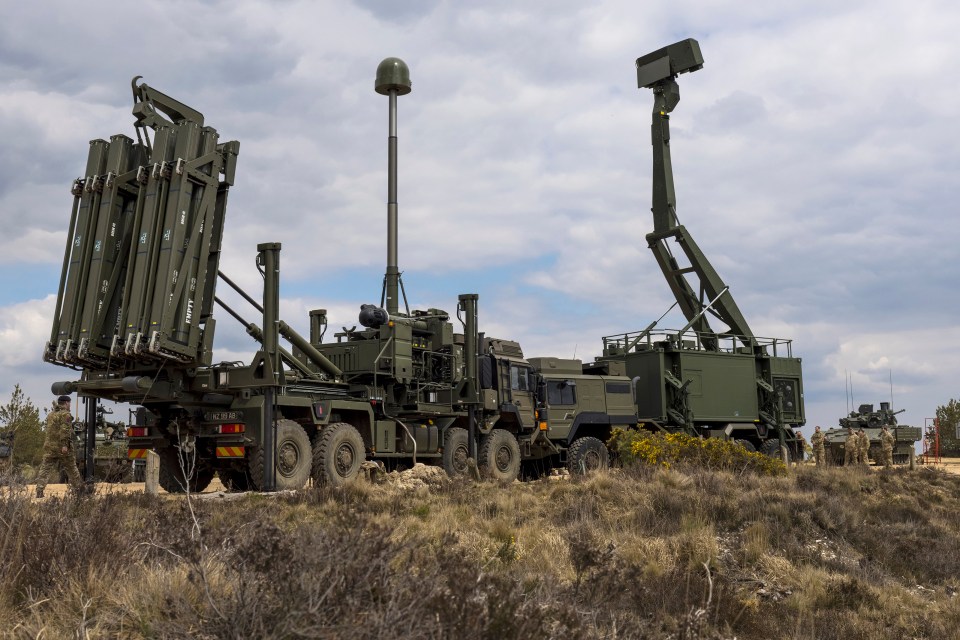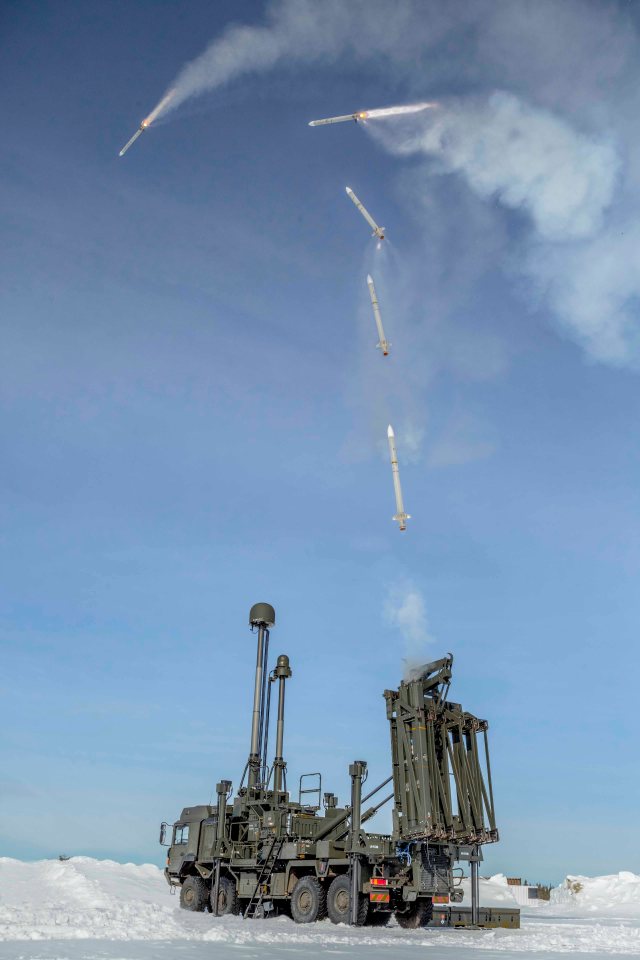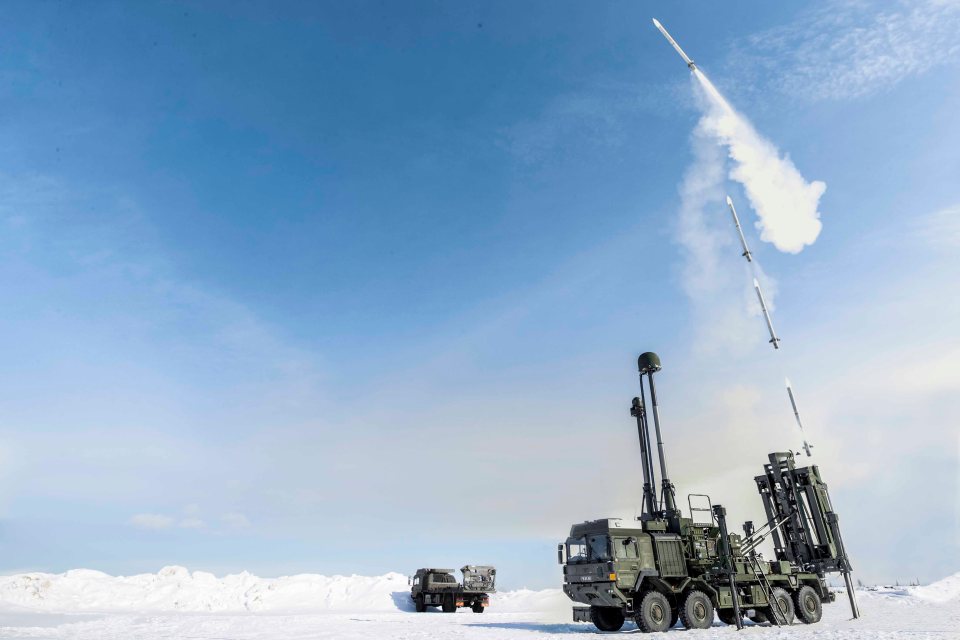THE Army is buying more mobile missile launchers to bolster Britain’s air defences.
The £120million deal will get six Land Ceptor launchers which can each fire up to eight missiles that can targets the size of tennis balls at three times the speed of sound up to 60 miles away.
It comes after recent war games showed Britain would be overwhelmed by a Russian missile and drone blitz.
The MoD said the Land Ceptor deal would “bolster national security” and secure 140 jobs.
It is part of a government plan to add two Sky Sabre air defence batteries to the seven already in service.
Armed Forces Minister Luke Pollard said it would double the number of Sky Sabre batteries available to deploy abroad.
He said: “We are equipping our armed forces with state-of-the art equipment to help keep us safe.
“Doubling our deployable Sky Sabre capability will strengthen the UK’s air defences, protect UK forces abroad, and deter our adversaries.”
‘Not a pretty picture’
Each battery consists of three Land Ceptor launchers, a Giraffe radar that detects and tracks incoming missiles, and a command and control centre which can guide up to 24 missiles on to 24 separate targets.
The Sun revealed that Russian missiles overwhelmed the UK in a war game based on attacks on Ukraine.
Defence chiefs simulated the first night of the war to test the UK’s air defences.
Air Commodore Blythe Crawford said: “It was not a pretty picture.”
The drills suggested bases would be blown to smithereens and £100 million fighter jets could get blitzed before they could hide.
Air Cdre Crawford, head of the RAF’s Air and Space Warfare Centre, said it showed the UK “home base” was no longer safe.
The drills used a £36 million wargaming system to test the UK’s responses to “hundreds of different types of munitions” attacking from multiple different directions.
It exposed multiple vulnerabilities including a chronic shortage of airfields and a lack of hardened shelters for protect and hide jets on the ground.
The government sold off scores of airfields and watered-down the RAF‘s powers to commandeer civilian runways.
The UK has no Iron Dome-style air defence system to protect the home nations from incoming missiles.
The Armed Forces rely on RAF Typhoons, which scramble from RAF Lossiemouth, to shoot down incoming drones and cruise missiles.
The only British missiles that could intercept Russian ballistic missiles are based onboard the Royal Navy’s Type 45 destroyers.
The Sky Sabre system is for short and medium range missile defence. It is designed to intercept aircraft, helicopters and air launched missiles.
Air Cdr Crawford warned in April Britain had got lax by standing at the edge of Europe and “feeling as though the rest of the continent stood between us and the enemy”.
He said: “Ukraine has made us all sit up.”
Speaking at London‘s Rusi think tank he said that for decades military planners had assumed they were “safe to operate from the home base because most of the wars we’ve been fighting have been overseas”.
He said: “We need to reverse that thinking and assume that from here on, we’re under threat in the home base now as well.”
The drill took place on a simulator known as Gladiator after Russia launched its full scale invasion in 2022.
But the results have not been revealed until now.
Addressing an Air and Missile Defence Conference at London-based RUSI think tank, Air Cmdr Crawford said: “We loaded night one of Ukraine into that synthetic environment and played it out against the UK and as you can imagine it was not a pretty picture.
“It reinforced the fact that we really need to get after this.”
The drills were stopped before bases were hit but it triggered an urgent review of the RAF’s resilience.
There is a worst case scenario where things we hold dear, parts of the UK, are within range of Russian missiles.
Air Chief Marshal Sir Mike Wigston
Since then Typhoon jets have practised landing on ice and motorways in Finland – as they would have to do if their bases were under attack.
Sweden’s Grippen fighter jet and Soviet MiG and Sukhoi jets were designed to land on motorways. They deliberately built their roads to be strong enough – and straight enough – for fighter jets to land.
Speaking before the war in Ukraine, former RAF boss Mike Wigston said pilots needed to practise scrambling at zero notice to prepare for a war with Russia.
He said RAF Typhoons and F-35B Lightning jets would have to land on motorways, race tracks and car parks if they held proper fleet dispersal drills for the first time since the Cold War.
The plans would see squadrons scatter into “fighting fours” to cut the risk whole fleets could be wiped out in a single strike.
Air Chief Marshal Sir Mike Wigston said it was his duty to prepare for a “worst case scenario”.
Speaking in Pearl Harbor, Hawaii, where the US Pacific fleet was decimated by a surprise attack in 1941, he said: “There is a worst case scenario where things we hold dear, parts of the UK, are within range of Russian missiles.”
He added: “It sounds a bit Cold Warry, but there is a pressing requirement to remember how to do it.”
RAF pilots practised dispersing to Boscombe Down, in Wiltshire.
The former World War Two airfield is used to test prototype aircraft but hasn’t been used by an operational squadron for more than 30 years.
A defence source said having more airfields made it easier to launch deception plans so that enemies are uncertain where the RAF jets are based.
But they warned cost-cutting drives had hamstrung the RAF’s military effectiveness.
















